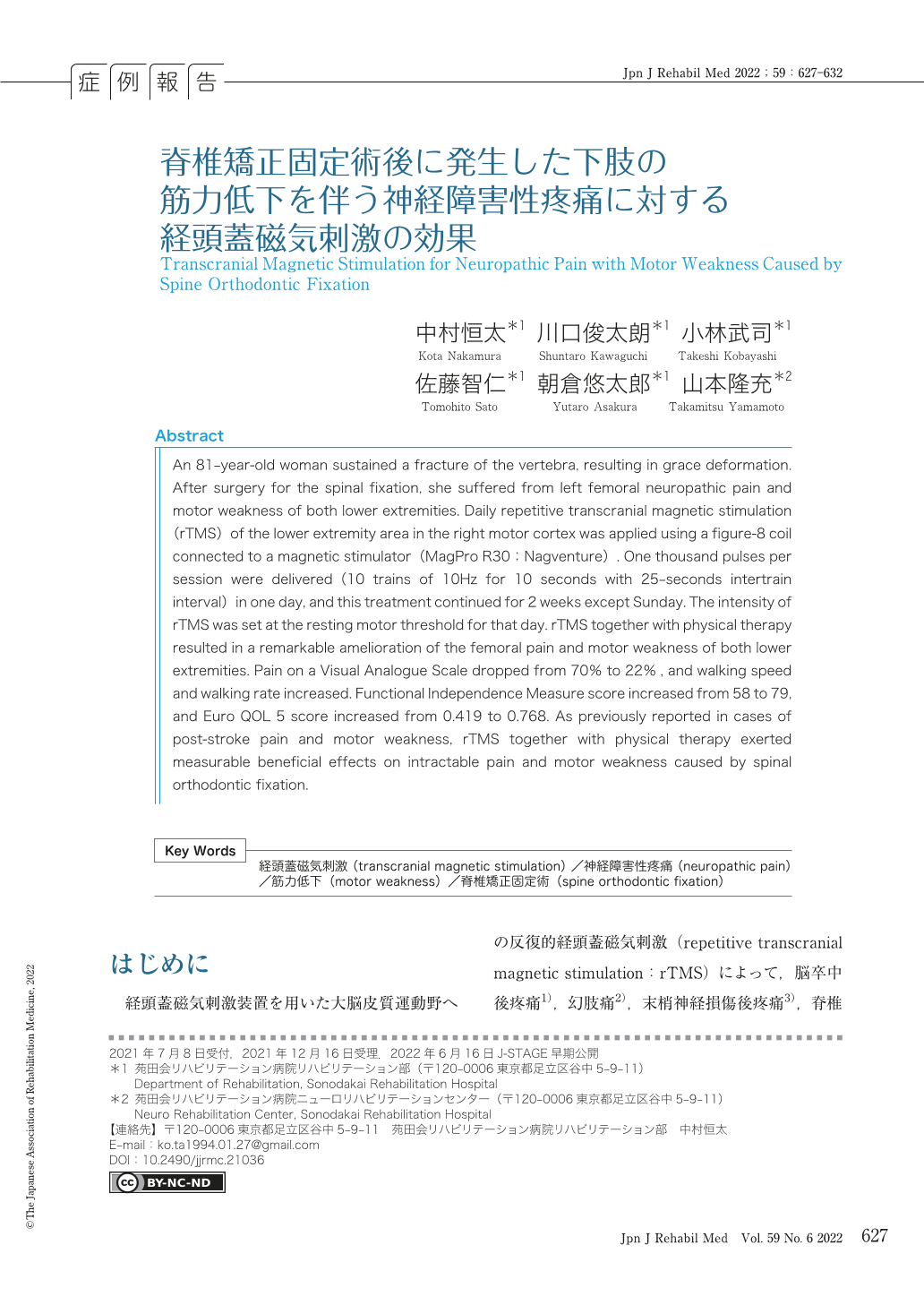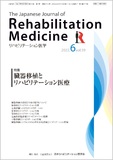Japanese
English
- 販売していません
- Abstract 文献概要
- 1ページ目 Look Inside
- 参考文献 Reference
はじめに
経頭蓋磁気刺激装置を用いた大脳皮質運動野への反復的経頭蓋磁気刺激(repetitive transcranial magnetic stimulation:rTMS)によって,脳卒中後疼痛1),幻肢痛2),末梢神経損傷後疼痛3),脊椎手術後疼痛症候群4)などに除痛効果が認められることが報告されている.また,脳卒中後の運動麻痺に対してリハビリテーションと磁気刺激を併用することによって運動機能回復を促進することが報告されている5-7).
腰椎後弯症は加齢や脊椎圧迫骨折後に生じ,腰痛や高度の腰曲がりを呈し,治療には脊椎矯正固定術が施行されることが多い.しかし,術後も疼痛やしびれが慢性化し,治療に難渋する症例が存在する.今回,2度目の脊椎矯正固定術後の約1カ月経過後も筋力低下を伴う下肢の神経障害性疼痛が持続した症例に対して,rTMSとリハビリテーションを行い,下肢の疼痛の著しい軽減とともに運動機能の改善を認めた症例を経験したので報告する.
An 81-year-old woman sustained a fracture of the vertebra, resulting in grace deformation. After surgery for the spinal fixation, she suffered from left femoral neuropathic pain and motor weakness of both lower extremities. Daily repetitive transcranial magnetic stimulation (rTMS) of the lower extremity area in the right motor cortex was applied using a figure-8 coil connected to a magnetic stimulator (MagPro R30;Nagventure).One thousand pulses per session were delivered (10 trains of 10Hz for 10 seconds with 25-seconds intertrain interval) in one day, and this treatment continued for 2 weeks except Sunday. The intensity of rTMS was set at the resting motor threshold for that day. rTMS together with physical therapy resulted in a remarkable amelioration of the femoral pain and motor weakness of both lower extremities. Pain on a Visual Analogue Scale dropped from 70% to 22%, and walking speed and walking rate increased. Functional Independence Measure score increased from 58 to 79, and Euro QOL 5 score increased from 0.419 to 0.768. As previously reported in cases of post-stroke pain and motor weakness, rTMS together with physical therapy exerted measurable beneficial effects on intractable pain and motor weakness caused by spinal orthodontic fixation.

Copyright © 2022, The Japanese Association of Rehabilitation Medicine. All rights reserved.


